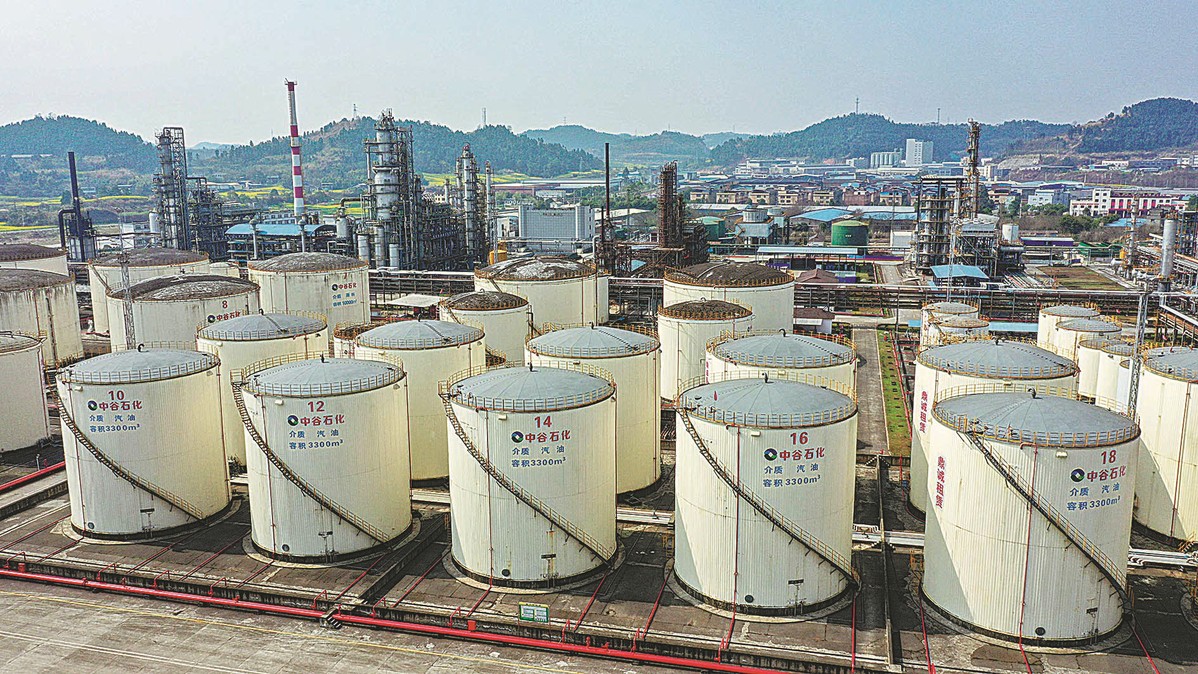Companies grapple with rising costs (3)

A view of the petroleum refinery facility of Sichuan Shengma Chemical Industry Co in Daying county, Sichuan province, on March 4. [Photo by Liu Changsong/for China Daily]
China's consumer inflation faces upward risks as well, but the possibility of the country's CPI growth surpassing the government's annual target of around 3 percent remains fairly low in the coming months, Lu said.
A potentially higher price level could put the PBOC in a dilemma to some degree, Lu said. On the one hand, the central bank may need to ease its policy to stem price rises from impairing aggregate demand in the economy. On the other hand, it may need to keep the monetary condition stable to avoid amplifying inflationary pressure.
The PBOC may strike a delicate balance by launching moderate easing measures, said Lu, who forecast a cut in the MLF interest rate by 10 basis points sometime this month and a reduction in the reserve requirement ratio by 50 basis points over the next couple of months.
While the market expected that the PBOC will announce in March a lower loan prime rate, the benchmark lending rate, the one-year LPR and the five-year LPR remained unchanged from the data in February.
The central bank's stance on monetary policy has so far remained unchanged. The monetary policy will remain prudent and flexible in general. Meanwhile, sufficient support will be rendered to micro and small enterprises as part of the efforts to support the real economy.
Iris Pang, chief China economist at Dutch bank ING, does not expect the rising energy prices to change the PBOC's future decisions to cut interest rates.
Given sluggish domestic demand, especially on the consumption front, higher energy prices can hardly translate into broad-based inflation and therefore may not impede the PBOC from cutting interest rates, Pang said.
According to her, the PBOC may front-load interest rate cuts in the first half of the year to boost consumption and investment, potentially sending the one-year LPR to 3.2 percent by the end of the year from 3.7 percent at present.
But Su Jian, a professor with the School of Economics at Peking University, stressed that fluctuating raw material prices should receive more attention. Manufacturing companies' investment confidence was once shaken in the first half of 2021 due to rapidly rising commodity prices. There should be more professional analysis of the future commodity price trend and policy guidance so that manufacturing companies' willingness to invest can be buoyed.
Traditional manufacturing companies now face tremendous challenges, and technology upgrading is the only way to survive, said Yang Zhiyong, deputy director of the National Academy of Economic Strategy. But strong government support is crucial so that companies can invest boldly to upgrade their equipment and technologies.
"There should be more diversified fiscal policies that can integrate government investment and social capital so that traditional manufacturing companies can be more competitive," he said.
 |
Photos
Related Stories
- Albania witnesses sharp price rise of daily necessities
- Japan's household spending rises 1.1 pct on year in February, COVID-19 weighs
- S.Korea's headline inflation hits 10-year high on soaring energy price
- Could U.S. markets remain high despite surging inflation?
- Two-thirds of U.S. Californians report experiencing financial hardship due to inflation: survey
Copyright © 2022 People's Daily Online. All Rights Reserved.










